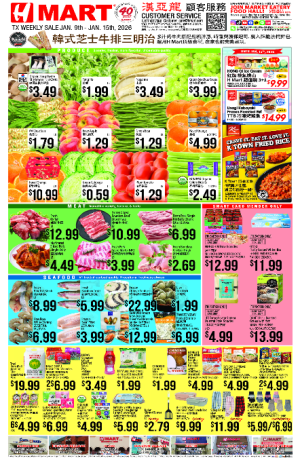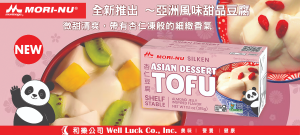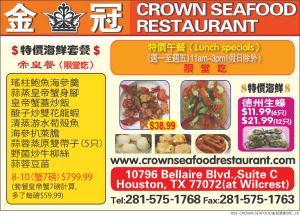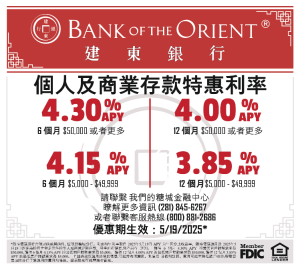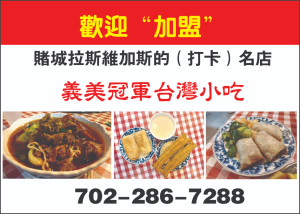您未見過的大明成化鬥彩雞碗 憲宗皇帝與萬貴妃的隱秘世界
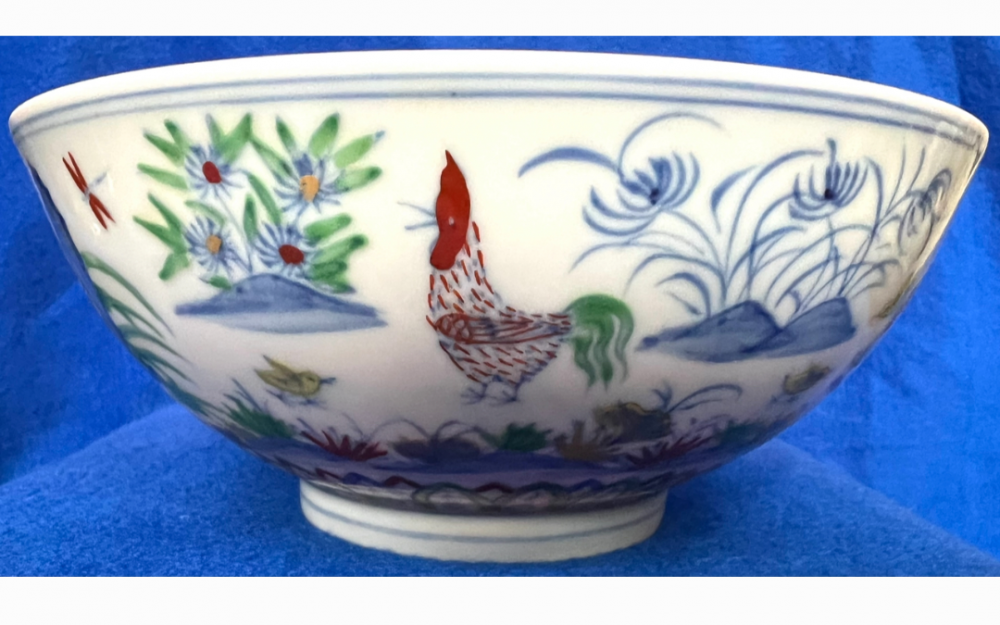
Ming Dynasty Chenghua Colorful Chicken Bowl The Secret World of Emperor Xianzong and Imperial Concubine Wan
【美南新聞泉深】鬥彩雞缸杯和鬥彩雞碗(也叫鬥彩雞缸碗)是大明成化制瓷業的“最高科技”,也是傳說中成化帝與萬貴妃的愛情見證。成化帝是明朝第八位皇帝朱見深(1447—1487年),明朝英宗朱祁鎮長子,1464至1487年在位,年號憲宗皇帝。
The Colorful (Chinese named as Dou Cai)Chicken Cups and Colorful Chicken Bowls are the “highest technology” of Chenghua porcelain industry in the Ming Dynasty. They are also witnesses of the real love between the legendary Emperor Chenghua and Imperial Concubine Wan. Emperor Chenghua was the eighth emperor of the Ming Dynasty, Zhu Jianshen (1447-1487). He was the eldest son of Zhu Qizhen, the Emperor Yingzong of the Ming Dynasty. He reigned from 1464 to 1487, with the reign name of Emperor Xianzong of Ming Dynasty.
在古瓷器行業,有“明看成化,清看雍正”之說。大明成化瓷器,幾乎每件著名的文物,背後都有傳奇故事。大明成化鬥彩雞缸杯和鬥彩雞碗,就是其中的典範。這些瓷器本就出自皇家,地位尊貴。後世曆代帝王,對它們更是無比追捧。簿簿的鬥彩雞缸杯和鬥彩雞碗,雄踞瓷器神品之位,表明大明成化鬥彩雞缸杯和鬥彩雞碗其內大有乾坤。
In the ancient porcelain industry, there is a saying that "the Ming Dynasty looks at Chenghua, the Qing Dynasty looks at Yongzheng". Almost every famous cultural relic of Ming Dynasty Chenghua porcelain has a legendary story behind it. The Ming Dynasty Chenghua colorful Chicken Cup and colorful Chicken Bowl are typical examples. These porcelains originally came from the royal family and had a distinguished status. Emperors of later generations were extremely fond of them. Colorful Chicken Cup and Colorful Chicken Bowl are among the most prized porcelains, indicating that the Colorful Chicken Cup and Colorful Chicken Bowl have great potential meaning within them.
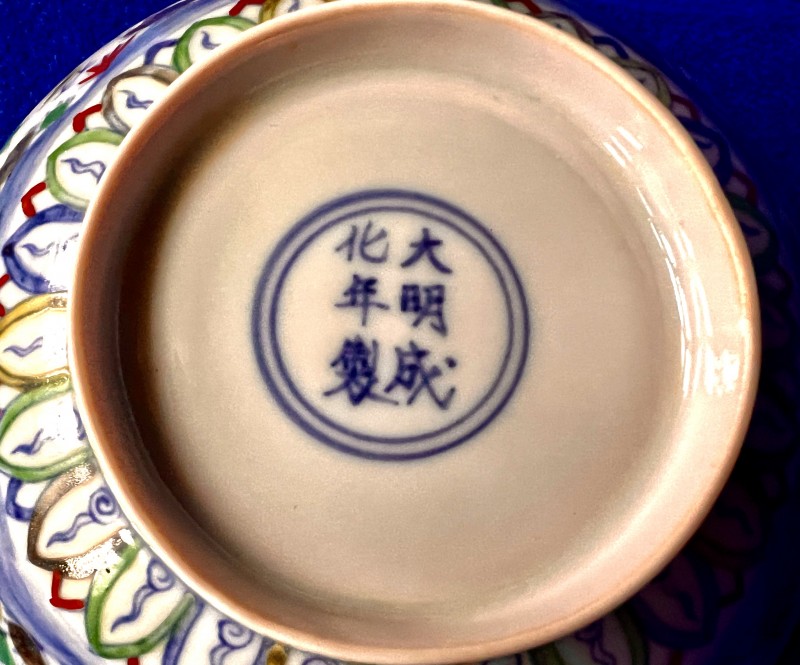
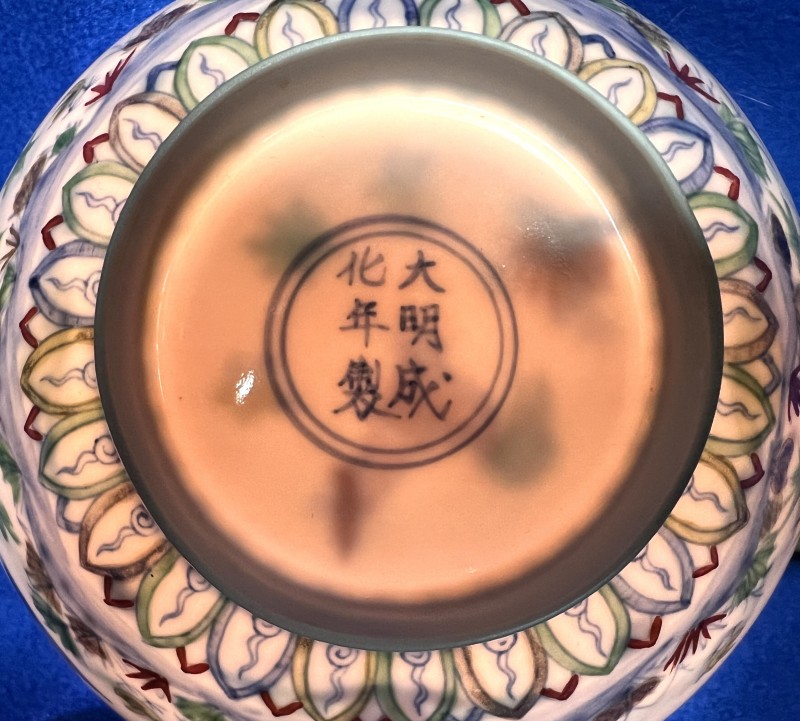
光線照射下鬥彩雞碗簿到可以看到內部的圖案
鬥彩是瓷器彩繪的一種工藝,流行于江西景德鎮等地。它是在坯體上,先用青花描繪圖案輪廓,施透明釉,高溫燒成後,再在釉上用各種絢麗燦爛的彩料填繪,在明亮的釉面上閃耀迷人的光彩,遙相輝映、爭奇鬥妍, 這就是成化鬥彩瓷器的精華。 專爲皇帝禦制的鬥彩雞碗,還會貼上純真黃金,經低溫彩爐烘烤後,金碧輝煌,最後成型,難度極大。由于彩繪方式分釉上彩和釉下彩兩部分,有拼逗之意,故稱爲“鬥彩”或“逗彩”。
Dou Cai (Colorful) is a technique for painting porcelain, which is popular in Jingdezhen, Jiangxi and other places. It is to first draw the outline of the pattern with blue and white color on the body, apply a transparent glaze, and then fire it at high temperature, and then fill it with various gorgeous and brilliant color materials on the glaze. Complementing each other and competing for beauty and brilliant, this is the essence of Chenghua colorful porcelain. The colorful chicken bowl, which was transformed into the emperor's imperial order, will also be affixed with pure gold. After being baked in a low-temperature color oven, it will be resplendent. The final shape is extremely difficult to make. Because the painting method is divided into two parts: overglaze color and underglaze color, which means to fight with each other, it is called "Dou Cai" or Colorful.
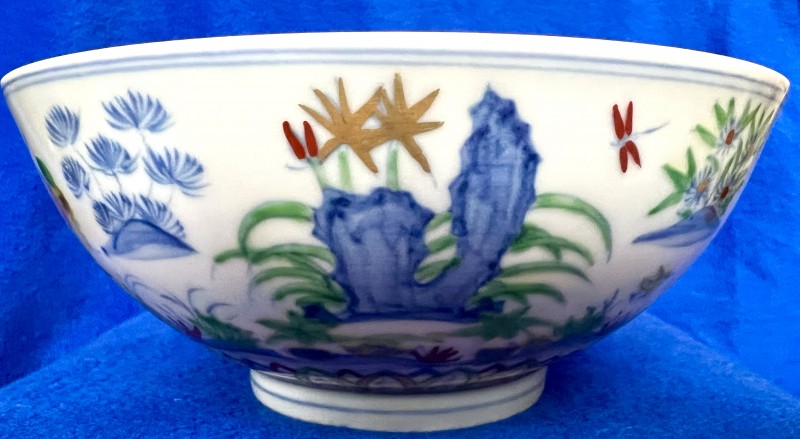
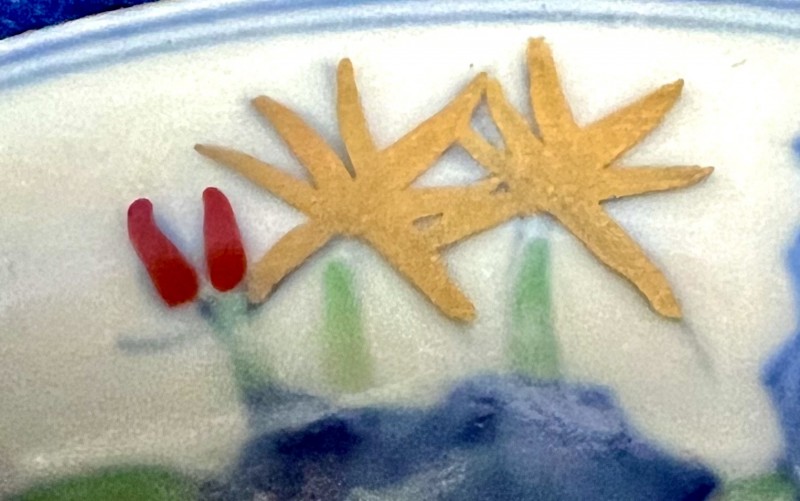
鬥彩雞缸杯和鬥彩雞碗的來曆
The origin of Colorful Chicken Cup and Colorful Chicken Bowl
明朝成化帝留給後世的,是那些爲皇貴妃萬貞兒做的“鬥彩成化瓷器”,因爲萬貴妃喜歡“奇巧之物” ,成化帝時期的那些薄透溫潤、細致可愛的鬥彩雞缸杯和鬥彩雞碗成了數百年來藏家追捧的極品,它們不只是成化朝代的工藝結晶,也是這段愛情的見證。
What Emperor Chenghua of the Ming Dynasty left to future generations were those "Colorful Chenghua porcelain" made for the imperial concubine Wan Zhen Er, because imperial concubine Wan liked "odd and clever things". The thin, warm, delicate, and lovely porcelain made during the Chenghua period The Colorful Chicken Cup and Colorful Chicken Bowl have been sought after by collectors for hundreds of years. They are not only the crystallization of the craftsmanship of the Chenghua Dynasty, but also the testimony of this love.
明朝大多數皇帝在人生中都充滿了故事,朱見深卻是最充滿了傳奇事故的皇帝。 他兩歲那年,瓦剌大舉進攻明朝,朱見深的父皇、明朝英宗帝朱祁鎮在太監王振的慫恿下,潇灑地禦駕親征北去。一番壯志,卻落得個悲慘下場,兵敗如山倒,連皇帝本人都被俘虜。 國不能一日無君,太子朱見深才兩歲,主小則國疑,在一些大臣的擁護下,朱祁鎮的弟弟朱祁钰被扶上位,即景泰帝上位。既然當上了皇帝,當然琢磨著皇位永固。後來當瓦剌把朱祁鎮放回來時,景泰帝不僅把哥哥軟禁了,還廢掉了朱見深的太子身份,把他趕出皇宮。懵懂年紀,朱見深便經曆大起大落,嘗盡人間辛酸。 好在朱見深剛被立爲太子時,太後便派了一個19歲的宮女萬貞兒照顧他。後來的歲月,無論多麽艱難,萬貞兒都一路相伴,既像母親,又像姐姐。 朱見深10歲那年,父親抓住一個機會,發動了“奪門之變”,再成皇帝,他又成了大明王朝的皇太子。也許是童年時期的不安全感影響太大,此後一直到長大登基,朱見深還是離不開萬貞兒,兩人索性發展出一段轟轟烈烈的“母子”不倫之戀。 《明史》中記載這個萬貞兒“機警,善迎帝意……帝每有遊幸,妃戎服前驅”。朱見深的母親無法理解兒子怎會如此專寵這個老宮女,忍不住問他。朱見深的回答道:“彼撫摩,吾安之,不在貌也。”意思是這和年輕貌美無關,只是和她在一起,我心安。
Most emperors of the Ming Dynasty lived full of stories, but Zhu Jianshen was an emperor full of legendary stories. When he was two years old, Wala launched a large-scale attack on the Ming Dynasty. Zhu Jianshen's father, Emperor Yingzong of the Ming Dynasty Zhu Qizhen, was encouraged by the eunuch Wang Zhen to march north in person. A great ambition, but ended in tragedy: the army was defeated, and even the emperor himself was captured. A country cannot live without a king for a day. The prince Zhu Jianshen was only two years old, and the ruler was in doubt. With the support of some ministers, Zhu Qizhen's younger brother Zhu Qiyu was promoted to the throne, that is, Emperor Jingtai came to the throne. Now that he has become the emperor, of course he is thinking about the permanent throne. Later, when Wala released Zhu Qizhen back, Emperor Jingtai not only put his brother under house arrest, but also abolished Zhu Jianshen's status as prince and drove him out of the palace. At an ignorant age, Zhu Jianshen experienced ups and downs and tasted all the bitterness of the world. Fortunately, when Zhu Jianshen was just established as the prince, the Queen Mother sent a 19-year-old palace maid Wan Zhen Er to take care of him. In the later years, no matter how difficult it was, Wan Zhen Er was with her every step of the way, like a mother and a sister. When Zhu Jianshen was 10 years old, his father seized an opportunity and launched the "Seize the Gate Rebellion". He became emperor again, and he became the crown prince of the Ming Dynasty. Perhaps the insecurity in childhood was too influential. From then until he grew up and ascended the throne, Zhu Jianshen still couldn't live without Wan Zhen Er, and the two simply developed a vigorous "mother-son" illicit love. History of the Ming Dynasty’s records showed that this Wan Zhen Er was "alert and good at welcoming the emperor's wishes... whenever the emperor was lucky enough to travel, his concubines would march forward in uniform". Zhu Jianshen's mother couldn't understand how her son could dote on this old palace maid so much and couldn't help but ask him. Zhu Jianshen replied: "She touches me, and I feel at ease. It's not about her appearance." This means that it has nothing to do with being young and beautiful. It's just that being with her makes me feel at ease.
英宗複辟後,理論上成化皇太子應當重見光明了,但東宮的生活相當孤獨,口吃的毛病讓他變得內向,即便聰明美麗、能歌擅琴的少女們一一來到他身邊,始終無人能如萬貞兒那樣,只從他一個眼神、一個舉動就理解他的心意。十五六歲時,英宗去世,年少的朱見深成爲一國之君,他必須承擔起治國的責任,但口齒不伶俐的少年,要如何領導朝中的老狐狸?下了朝,總得有人做他的避風港。萬貞兒的金剛怒目、專權善鬥是對外人的,對待成化帝時,她極其周到細致。當皇帝出外時,她穿上軍戎裝在前護衛;在宮中,不准旁人隨意驚擾皇帝休息;夜間當成化帝輾轉反側難以入睡時,只要 “彼撫摩,吾安之” ,俨然像 “垂簾聽政” 。年齡、容貌、青春在他們之間從來不是問題,她能看見他的孤獨與不安,而他看見她強悍潑辣之下的溫柔。當這個高齡産婦生一個皇子時,成化帝歡喜若狂。但當孩子不幸夭折後,他也沒有遠離她。有沒有孩子,從來不影響他們相愛,他們之間沒有別人,是對方的保護者,也是被保護者,相濡以沫。
After the restoration of Yingzong, crown prince Chenghua should theoretically see the light again, but the life in the East Palace was quite lonely, and his stuttering problem made him introverted. Even though smart, beautiful girls who could sing and play the Guqin and Pipa came to him one by one, he always remained silent. No one can understand his thoughts just from his eyes and actions like Wan Zhen Er. When he was fifteen or sixteen years old, Yingzong passed away, and the young Zhu Jianshen became the king of the country. He must take on the responsibility of governing the country, but how can a young man who is not articulate lead the old fox in the court? When he is in the palace, someone must be his haven. Wan Zhen Er's angry, authoritarian, and aggressive attitude towards outsiders was very considerate and meticulous when dealing with Emperor Chenghua. When the emperor went out, she put on her military uniform to guard him; in the palace, no one else was allowed to disturb the emperor's rest; at night, when Emperor Cheng Hua was tossing and turning and unable to fall asleep, she just "touched him, and I am safe", just like "listening to the government behind the curtain”. Age, appearance, and youth have never been an issue between them. She can see his loneliness and uneasiness, and he can see her gentleness beneath her fierceness. When this elderly woman gave birth to a prince, Emperor Chenghua was ecstatic. But when the child died unfortunately, he did not stay away from her. Whether they have children or not has never affected their love for each other. There is no one else between them. They are each other's protectors and protected, and they support each other.
鬥彩雞缸杯和鬥彩雞碗燒制于明朝成化時期,因碗壁內外畫有雞的圖案,故此得名。關于鬥彩雞缸杯和鬥彩雞碗的來曆,傳說是成化帝爲萬貴妃所制,是送給萬貴妃的珍貴禮物。
The Colorful Chicken Cup and Colorful Chicken Bowl were fired during the Chenghua period of the Ming Dynasty. They were named after the patterns of chickens painted on the inside and outside of the bowl walls. As for the origin of Colorful Chicken Cup and Colorful Chicken Bowl, it is said that Emperor Chenghua made it for Imperial Concubine Wan as a precious gift.
成化帝爲什麽禦制鬥彩雞缸杯和鬥彩雞碗?這是二人的隱秘世界,目前尚無法考證。 據史書記載,成化帝熱衷于書畫,藝術天分極高。有一次,他欣賞宋代人畫的《子母雞圖》,看到母雞帶著幾只小雞覓食的溫馨場景,非常有感觸,便計劃制作鬥彩雞缸杯,送給萬貴妃賞玩,制作鬥彩雞碗,爲自己賞玩,享有酒足飯飽、快樂人生的惬意。 當然也有人從另一個更血腥的版本解讀鬥彩雞缸杯和鬥彩雞碗的來曆:萬貞兒37歲時,生下皇子,朱見深高興壞了,立她爲皇貴妃。可惜,這個孩子不滿1歲就夭折了。據說孕嗣無望,萬貴妃此後爲禍後宮,殘害其他嫔妃和皇嗣(皇太子),但朱見深出于一片真心,對她依然寵愛有加,不忍責難,故制作鬥彩雞碗和鬥彩雞缸杯,選擇一個紅胎和一個白胎,一個代表自己(紅),一個代表萬貴妃(白),紅白相容,寓意和諧相處,懇請萬貴妃寬容待人、手下留情。
Why did Emperor Chenghua make the Colorful Chicken Cups and the Colorful Chicken Bowls? This is the secret world of the two people, which cannot be verified yet. According to historical records, Emperor Chenghua was keen on calligraphy and painting and had extremely high artistic talent. Once, he admired the "Pictures of Hens and Chicks" painted by people in the Song Dynasty. He was very moved when he saw the warm scene of a hen looking for food with several chicks and planned to make a colorful chicken cup for Imperial Concubine Wan to enjoy, and make colorful chicken bowl for himself, and enjoy the comfort of having enough food and wine, and a happy life. Of course, some people interpret the origins of the Colorful Chicken Cup and Colorful Chicken Bowl from another, bloodier version: When Wan Zhen Er was 37 years old, she gave birth to a prince. Zhu Jianshen was so happy that he made her the imperial concubine. Unfortunately, the child died before he was 1 year old. It is said that Imperial Concubine Wan, who had no hope of having an heir, brought trouble to the harem, and killed other concubines and the emperor's heirs (Crown Prince). However, Zhu Jianshen still loved her very much out of his sincerity and could not bear to blame her, so he made colorful chicken cup and colorful chicken bowl, choose a red carcass and a white carcass, one representing yourself (red) and the other representing Imperial Concubine Wan (white). Red and white are compatible, implying harmonious coexistence, kindly requesting Imperial Concubine Wan to be tolerant and merciful to others.
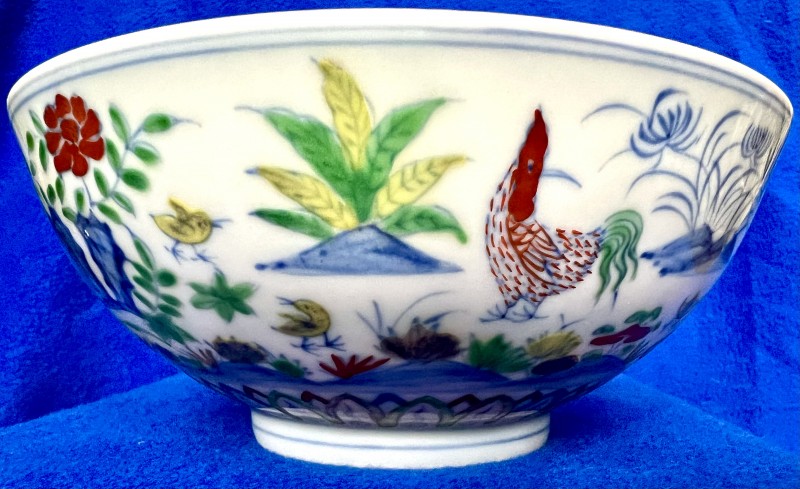
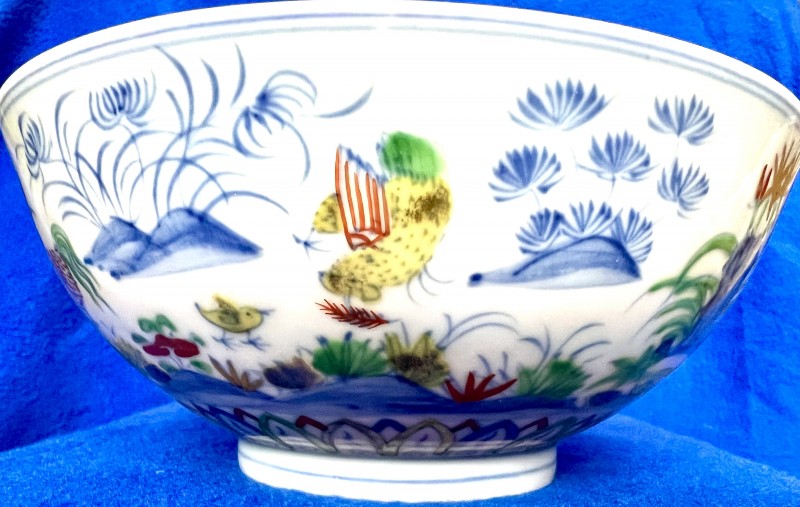
人人都知道鬥彩雞缸杯,因爲拍賣鬥彩雞缸杯創下了古瓷器行業的巅峰,拍賣時呈幾億、十幾億的價格飙升。鬥彩雞缸杯是成化帝獻給皇貴妃萬貞兒的禮物,而鬥彩雞碗是成化帝獻給自己的禮物,做的極其精致,它是皇權的象征,要世代流傳,因爲保住了飯碗,才能保住政權,才能保住江山!因此,鬥彩雞碗此後成爲明朝皇家的禦用私藏珍品,一代一代地向下傳遞,一直傳到明朝最後一位皇帝朱由檢(1611年2月6日—1644年4月25日)。
Everyone knows about the colorful chicken cups, because the auction of the colorful chicken cup hit the pinnacle of the ancient porcelain industry, with prices soaring from hundreds of millions to more than billions at the auction. The colorful chicken bowl was a gift from Emperor Chenghua to the imperial concubine Wan, while the colorful chicken bowl was a gift from Emperor Chenghua to himself. It is extremely exquisite. It is a symbol of imperial power and needs to be passed down through the generations. Because only by keeping your bowl can you keep your political power and your country! Therefore, the colorful chicken bowls became the private treasures of the Ming Dynasty royal family and were passed down from generation to generation until the Ming Dynasty last Emperor Zhu Youjian (February 6, 1611 - April 25, 1644).
朱由檢,字德約,明朝光宗的第五子,明熹宗異母弟。他于公元1627年至1644年在位,年號 “崇祯” 。崇祯帝一生操勞,夜以繼日地批閱奏章,節儉自律,不近女色。
Zhu Youjian, courtesy name Deyue, was the fifth son of Guangzong of the Ming Dynasty and half-brother of the Ming Xizong. He reigned from 1627 to 1644 AD, with the reign name "Chongzhen". Emperor Chongzhen worked hard all his life, reviewing memorials day and night, being frugal and self-disciplined, and not close to women.
崇祯年間的勤奮,與萬曆、天啓相較,朝政有了明顯改觀。即位之初就大力鏟除閹黨,曾六度下诏罪己,惜其生性猜忌多疑,畢生獨攬大權,未善與官員放心合作,故無法挽救走向窮途末路的明朝。崇祯時期,國內民變與自然災害不斷,關外後金政權虎視眈眈,已處于內憂外患的境地。
Compared with Wanli and Tianqi, the diligence during the Chongzhen period resulted in significant changes in government affairs. When he came to the throne, he vigorously eradicated the eunuchs and issued edicts six times. Unfortunately, he was jealous by nature, monopolized power all his life, and was not good at cooperating with officials, so he could not save the Ming Dynasty, which was on the verge of collapse. During the Chongzhen period, domestic civil commotions and natural disasters continued, and the Houjin regime outside the country was eyeing the country. It was already in a situation of internal and external troubles.
崇祯十七年(1644年),起義軍領袖李自成攻破北京紫禁城,崇祯帝于四面楚歌之中在皇宮北側的景山老歪脖子樹上自缢身亡。死時光著左腳,右腳穿著一只紅鞋,(紅色象征著朱家,朱是鮮紅的顔色),死於崇祯甲申叁月十九日醜時,時年33歲,身邊僅有提督太監王承恩陪同。爲什麽只穿一只紅鞋,因爲他毀了明王朝,愧對于明朝開國元老朱元璋,愧對于朱家。崇祯自缢殉國,其所統治的明王朝也隨即滅亡。
In the seventeenth year of Chongzhen (1644), the leader of the rebel army Li Zicheng broke through the Forbidden City in Beijing. Emperor Chongzhen, surrounded by enemies, hung himself on the old, crooked neck tree in Jingshan on the north side of the palace. He died with his left foot bare and his right foot wearing a red shoe (red symbolizes the Zhu family, and Zhu is the bright red color). He died on the 19th of March in Jiashen, Chongzhen, at the age of 33, with only the eunuchs around him. Accompanied by Wang Chengen. Why did he only wear one red shoe? Because he ruined the Ming Dynasty, and was ashamed of Zhu Yuanzhang, the patriarch of the Ming Dynasty and ashamed of his Zhu family Chongzhen hanged himself and died for his country, and the Ming Dynasty he ruled also perished.
崇祯統治時期,重用葡萄牙軍隊,也埋下隱患。崇祯二年二月,32個葡萄牙铳師在公沙的帶領下,攜帶多門槍炮去往北京。同年,皇太極從張家口殺入華北,派重兵把守臨近北京的遵化、灤州等四城,准備來年再攻京城。然而當葡萄牙铳師到達北京後,跟隨明軍攻打四城,在淩厲的西洋大炮面前,滿洲八旗潰不成軍,四城丟失。戰鬥勝利後,葡萄牙人得到了崇祯的親自嘉獎,葡萄牙人在紫禁城內紙醉金迷、驕奢淫逸,紫禁城數年成爲葡萄牙人的遊樂場地,因此對紫禁城有充分的了解,知道什麽是皇家最寶貴的東西。崇祯自缢後,皇家的鬥彩雞碗被葡萄牙人盜走,流落到海外,輾轉到不同的國度。因此,北京故宮博物院和台北故宮博物院都缺乏這件明皇宮紫禁城的世代傳家寶。
During the reign of Chongzhen, the heavy use of the Portuguese army also posed hidden dangers. In February of the second year of Chongzhen, 32 Portuguese gunnery divisions, led by Gongsha, went to Beijing carrying many guns and cannons. In the same year, Huang Taiji entered North China from Zhangjiakou and sent heavy troops to guard Zunhua, Luanzhou and other four cities near Beijing, preparing to attack the capital again next year. However, when the Portuguese gunnery division arrived in Beijing, they followed the Ming army to attack the four cities. In the face of the powerful Western artillery, the Eight Banners of Manchuria collapsed, and the four cities were lost. After the victory in the battle, the Portuguese were personally commended by Chongzhen. They indulged themselves in extravagance and extravagance in the Forbidden City. The Forbidden City became the Portuguese activity venue for several years. Therefore, they had a full understanding of the Forbidden City and knew what the most precious thing of the royal family was. After Chongzhen hanged himself, the royal colorful chicken bowl was stolen by the Portuguese and flown overseas to different countries. Therefore, both the National Palace Museum in Beijing and the National Palace Museum in Taipei lack this generational heirloom from the Forbidden City of the Ming Dynasty.
鬥彩雞缸杯和鬥彩雞碗,明代瓷器之冠
The Colorful Chicken Cup and Colorful Chicken Bowl, the crown of Ming Dynasty porcelain
鬥彩雞缸杯和鬥彩雞碗無疑受成化帝個人的影響很深。因爲鬥彩雞碗流落到海外,在中國沒有多少古董收藏家和古董鑒定專家真正見到過它的原貌,見到的也是傳說中想象的“鬥彩雞碗”的意向複制品。
The Colorful Chicken Cup and Colorful Chicken Bowl were undoubtedly deeply influenced by Emperor Chenghua. Because the colorful chicken bowl has been exported overseas, not many antique collectors and antique appraisal experts in China have seen its original appearance. What they have seen is an intended replica of the legendary and imagined "chicken bowl".

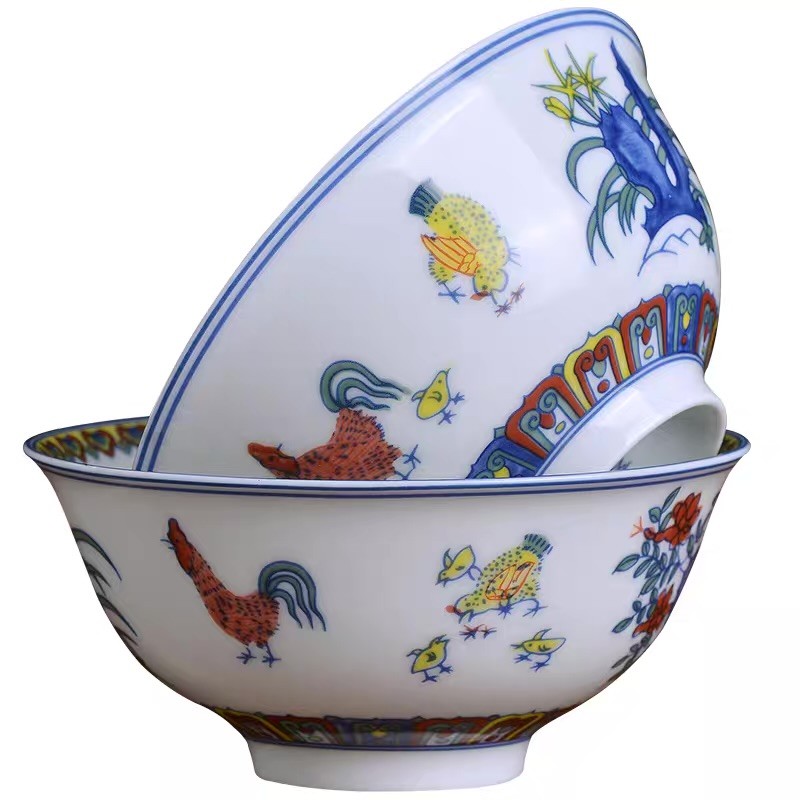 仿制的鬥彩雞碗
仿制的鬥彩雞碗
故宮所藏的鬥彩雞缸杯,高3.3厘米,口徑8.3厘米,足徑4.1厘米。敞口,臥足,碩底,形如水缸,給人以“小器大樣”之感。杯外共4組紋飾:一組爲蘭花柱石;一組爲芍藥柱石;一組爲子母雞5只,雄雞昂首長鳴,母雞啄蟲哺雛;另一組也繪子母雞。色彩上,用紅、綠、黃、赭和釉下青花結合,紅彩鮮豔,黃、綠彩光亮,醒目而活潑。 鬥彩雞缸杯流傳至今的很少,全世界加起來不超過16件。主要集中在故宮、台北故宮和一兩家大的博物館裏,私人手中極其少見,但複制品也開始泛濫。
The colorful chicken cup stored in the Forbidden City is 3.3 cm high, 8.3 cm in diameter, and 4.1 cm in full diameter. It has an open mouth, lying feet, and a huge bottom, shaped like a water tank, giving people the feeling of "a small vessel with a large appearance". There are four groups of decorations on the outside of the cup: one group is orchid pillars; one group is peony pillars; one group is five hens, with roosters holding their heads high and crowing, and hens pecking insects and feeding their chicks; the other group is also painted with hens. In terms of color, red, green, yellow, ocher and underglaze blue and white are combined. The red color is bright, the yellow and green colors are bright, eye-catching, and lively. There are very few colorful chicken cups that have been handed down to this day. There are no more than 16 pieces in the world. They are mainly concentrated in the National Palace Museum, Taipei National Palace Museum and one or two large museums. They are extremely rare in private hands, but replicas are also beginning to proliferate.
鬥彩雞碗與鬥彩雞缸杯明顯不同,制作時的思路完全不同。碗大氣,代表成化帝時代的輝煌;杯小巧,代表萬貴妃嬌柔。除了有大小差別之外,胎體也有區別,采用一紅一白,碗用紅胎,杯用白胎,二者和諧相處,相得益彰。鬥彩雞碗的紋飾更複雜,靠近碗的底部有蓮花寶座,碗屬于神位,歸皇帝所有,寓意皇上因終日聽天神講育真經,而悟得修仙之術,並依此潛心修行,不斷吸取天地精氣,最終修煉成神。上面是沃土和不同色彩的植被、枝葉和花草,寓意萬物生長,其中二支枝幹每支貼上4條金葉,預示四平八穩;一支枝幹貼上6條金葉,預示六六大順。土地上面的兩側是兩只雄雞昂首長鳴,兩只母雞餵食小雞。再上面是一組爲蘭花柱石,蘭花中貼上金條花瓣;另一側爲兩株紅色牡丹花,寓意牡丹花開,繁花似錦,燦爛輝煌,榮華富貴。兩株牡丹,也象征成化帝與萬貴妃純潔與愛情,又寓意國尊繁榮昌盛,家重富貴平安,人喜幸福吉祥。牡丹莖葉上有兩只金鳥相伴,上面還有蜻蜓飛翔。牡丹花的旁邊爲萬年青枝葉,寓意生機勃勃、健康長壽、江山穩定! 碗內底部爲雄雞昂首長鳴,旁邊有小雞相伴,寓意代代相傳。雄雞也代表雄風,代表皇權至高無上、大展宏圖,也寓意功成名就、吉祥如意!同時也充滿“不鳴則已,一鳴驚人” 的抱負與志向!周圍是蓮花祥雲,之間植入4群蓮花種子,表達了吉祥、喜慶、幸福的願望以及對生命和傳承的美好向往。最上面是由不同色彩、對稱的蘭花花瓣環繞。蘭花的花語是淡泊、高雅、美好、高潔、賢德,也有經久不衰和富貴長壽之意,因此也可形容爲子孫滿堂,後代昌盛。
The Colorful Chicken Bowl is obviously different from the Colorful Chicken Cup. The idea when making it is the bowl is grand, representing the glory of Emperor Chenghua's era; the cup is small, representing the delicateness of Imperial Concubine Wan. In addition to the difference in size, there are also differences in the carcass. One is red and one is white. The red carcass is used for the bowl and the white carcass is used for the cup. The two coexist harmoniously and complement each other. The pattern of the colorful chicken bowl is more complex. There is a lotus throne near the bottom of the bowl, which belongs to the throne of God and belongs to the emperor. It means that the emperor understood the art of cultivating immortals and devoted himself to practicing it because he listened to the gods' sermons all day long. Continuously absorb the essence of heaven and earth, and eventually cultivate to become a god. Above it is fertile soil and vegetation, branches, leaves and flowers of different colors, which symbolize the growth of all things. Two of the branches are each covered with 4 gold leaves, indicating stability; one branch is covered with 6 gold leaves, indicating good luck in the six. On both sides of the land are two roosters crowing, and two hens feeding their chicks. the other group is of peony pillars, with two gold birds accompanying them and a dragonfly flying above. On the other side are two red peonies, which means that the peonies are blooming, blooming, brilliant, prosperous, and wealthy. The two peonies also symbolize the purity and love between Emperor Chenghua and Imperial Concubine Wan. They also imply the prosperity of the country, the wealth and peace of the family, and the happiness and good fortune of the people. There are two golden birds accompanying each other on the stems and leaves of peonies with dragonflies flying above them. Next to the peony flowers are evergreen branches and leaves, which symbolize vitality, health and longevity, and stability! The bottom of the bowl is a rooster with its head raised and crowing, accompanied by chicks, which symbolizes inheritance from generation to generation. The rooster also represents majesty, the supremacy of imperial power and grand ambitions, and implies success and good luck! At the same time, it is also full of ambitions and aspirations of "If you don't make a sound, you will be a blockbuster"! Surrounded by auspicious clouds of lotus flowers, four groups of lotus seeds are implanted in the middle, expressing wishes of auspiciousness, jubilation, happiness and a beautiful yearning for life and inheritance. The top is surrounded by symmetrical orchid petals of different colors. The flower language of orchids is indifferent, elegant, beautiful, noble, and virtuous. It also means longevity, wealth, and longevity. Therefore, it can also be described as a house filled with descendants and prosperous future generations.
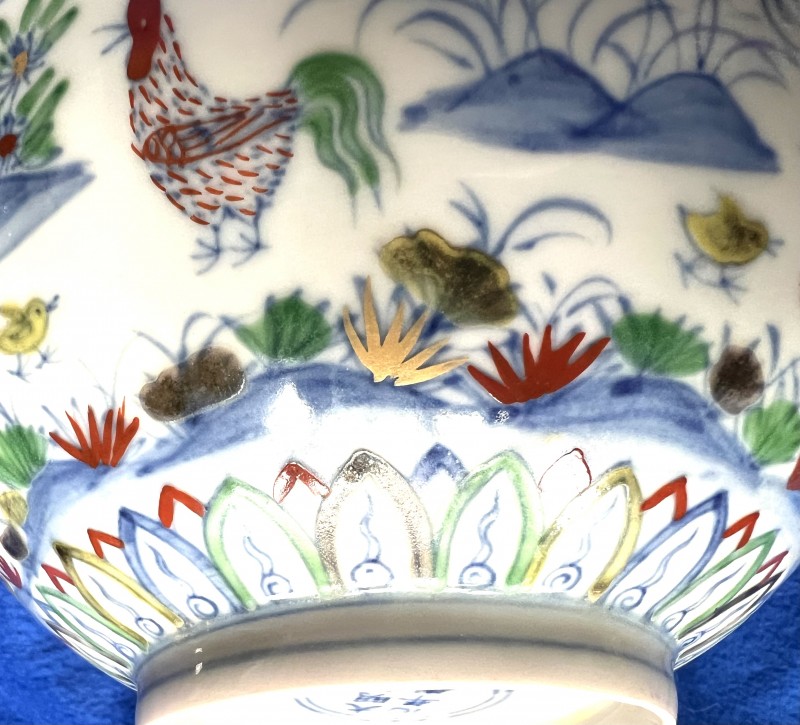
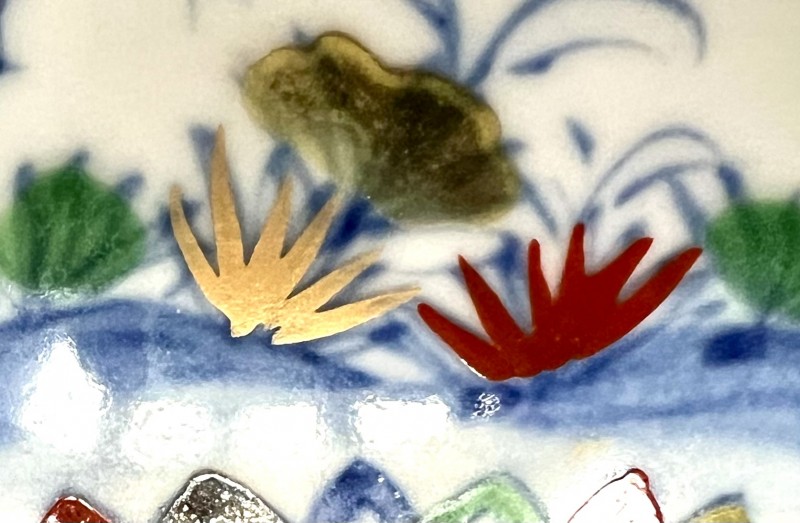
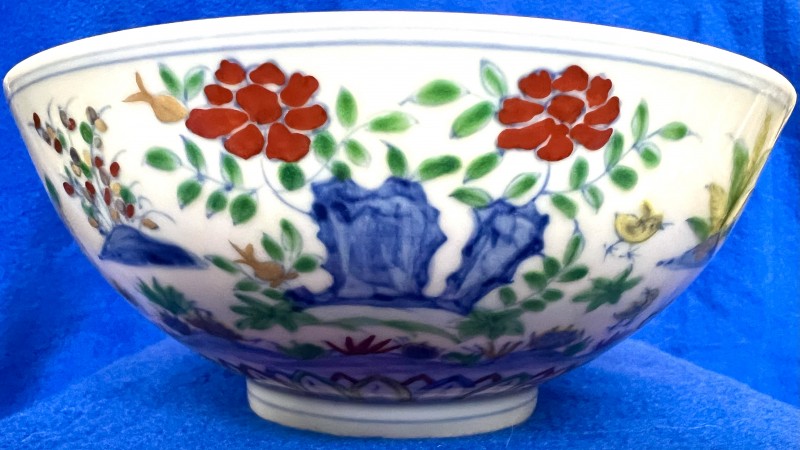
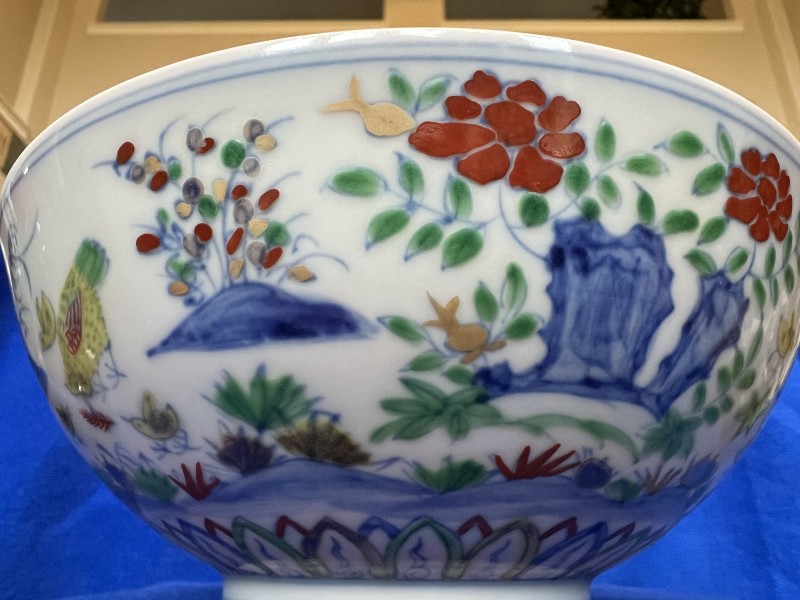
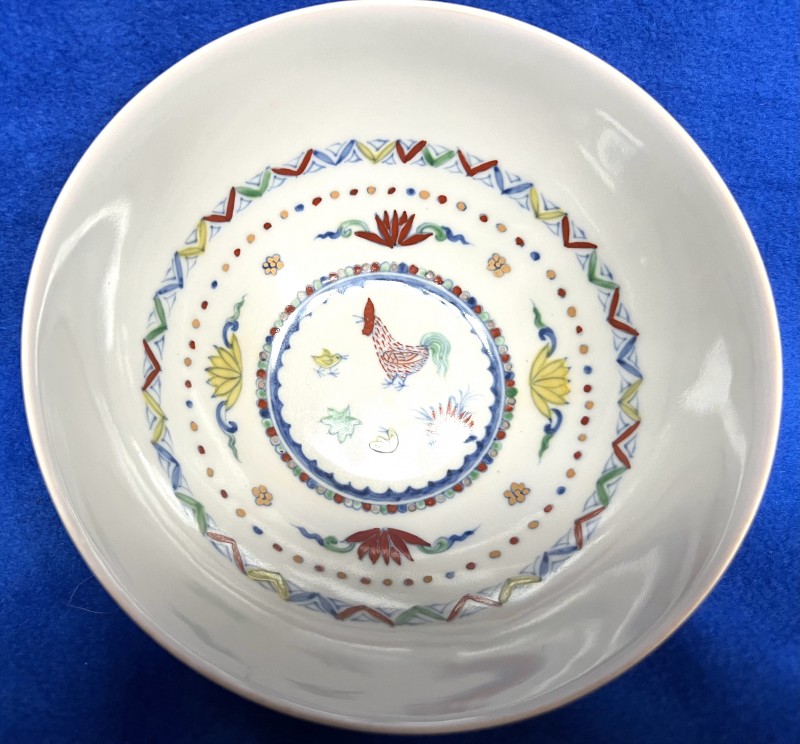
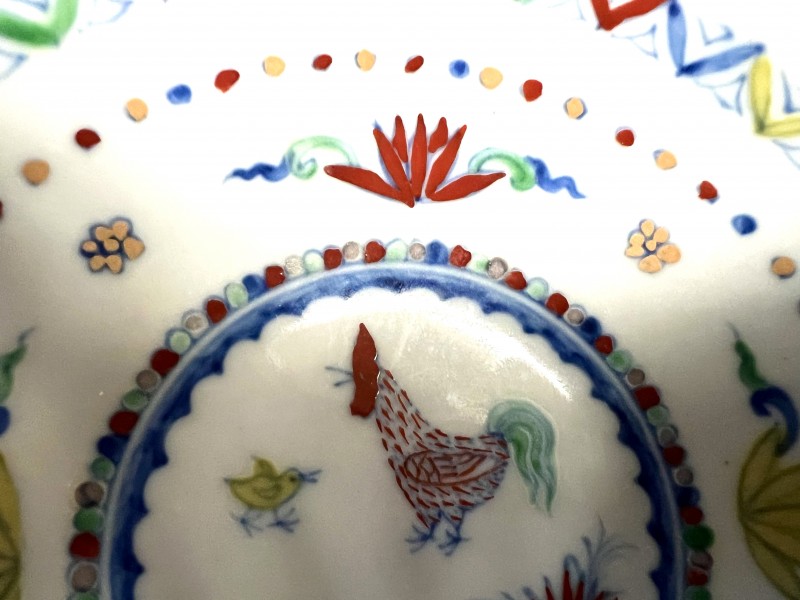
在明代,鬥彩是一種“天家器物”,主要供宮廷賞玩,難得流落民間。從技藝上說,因爲用料、用彩講究,在釉上繪上3、4種色彩,最多達6至8種色彩,而且每一種顔色中也有多個層次,比如光是黃色,就有杏黃、蜜蠟黃、姜黃多種,燒成後鮮亮奪目,加上胎體緊密瑩薄,迎光似透明,甚至薄如蟬翼,自然深受追捧。
In the Ming Dynasty, Dou Cai was a kind of "heavenly artifact", mainly for the palace to enjoy, and rarely found among the people. From a technical point of view, because of the careful use of materials and colors, 3 or 4 colors are painted on the glaze, up to 6 to 8 colors, and each color also has multiple levels. For example, just yellow, there are many kinds of apricot yellow, beeswax yellow, and turmeric. They are bright and eye-catching after being fired. In addition, the carcass is compact and translucent, making it seem transparent to the light, or even as thin as cicada wings, so it is naturally very popular.
據《明史·食貨志》記載,成化一朝,朝廷不斷增加官瓷費用的投入,不管花費,只求結果。爲燒成一件器物,不惜制作數十、數百,把其中最好的拿出來上供朝廷,次品全都打碎。如此高標准、嚴要求之下,當然出的都是精工細活,每次出現都是一件傳奇古董。成化鬥彩瓷器之所以成爲經典至寶,就是因爲稀世罕見。繼成化之後,鬥彩雞缸杯和鬥彩雞碗在曆代都被模仿,卻從未被超越。
According to the "History of Ming Dynasty·Shihuo Zhi", during the Chenghua Dynasty, the imperial palace continued to increase its investment in official porcelain expenses, regardless of the cost, only seeking results. To burn a single utensil, dozens or hundreds were made, and the best ones were presented to the court, while all the defective ones were smashed. Under such high standards and strict requirements, of course everything produced is exquisitely crafted, and every time it appears, it is a legendary antique. The reason why Chenghua Dou Cai porcelain has become a classic treasure is because it is rare. Following Chenghua, the colorful chicken cups and colorful chicken bowls have been imitated throughout the ages but have never been surpassed.
泉深微信號:Lionchu888







